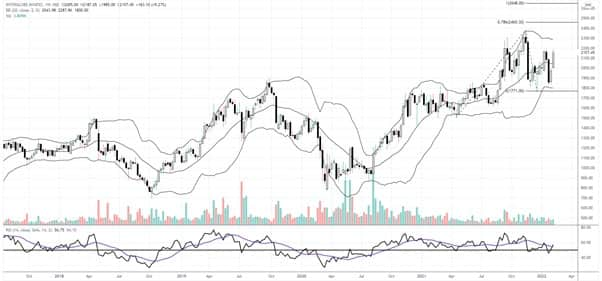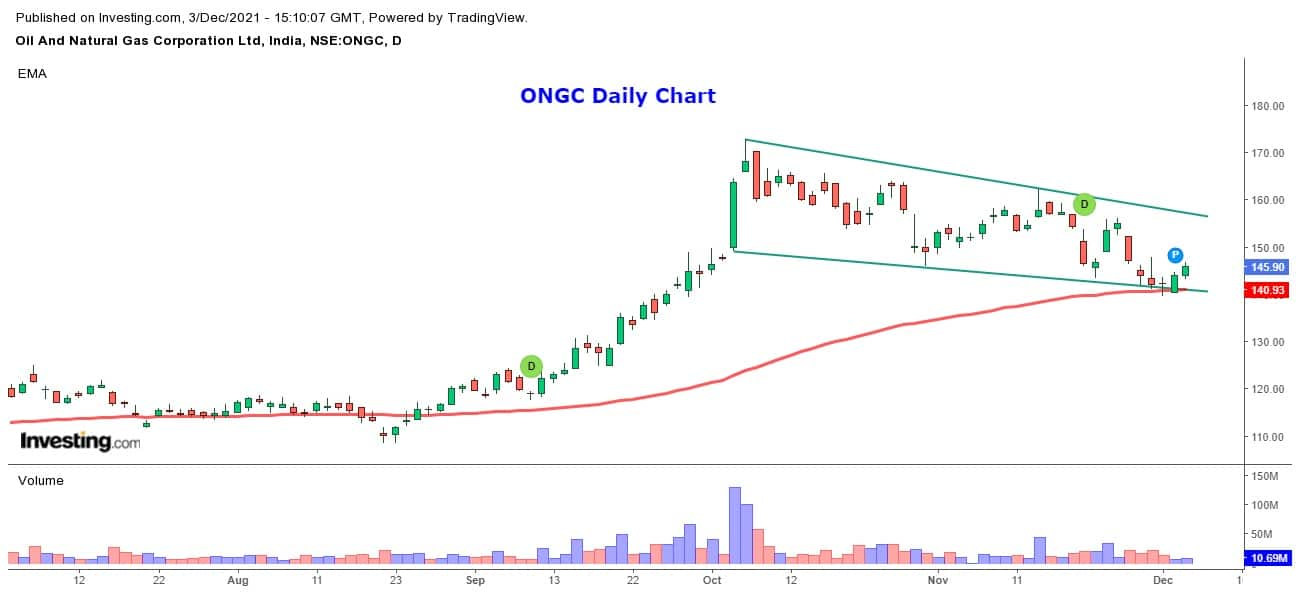
With around 15 years of experience purely in equity research, Mazhar Mohammad of Chartviewindia says that based on the long-term Elliott Wave counts, he feels that the current rally is an upward corrective move.
In Elliot wave parlance, it looks like a Double Three Combination correction and the current counter trend rally is inside the second corrective structure. “If our observations are right, then sooner than later the market should top out and facilitate the downswing which should ideally go below 15,183 to bottom out,” says the founder and chief market strategist at Chartviewindia in an interview to Moneycontrol.
On the IT space, he says the sector may remain an underperformer and a weakness in the IT index may contribute to the resumption of the downswing. In simple words, “it may outperform on the downside if the Nifty were to fall 10 percent”.
Excerpts from the discussion:
In the last interview, you had mentioned that the Nifty could fall up to 14,000 levels. What’s your stand today?
In the past, whenever markets witnessed a bigger correction of a minimum of 10 percent and extended up to 25 percent, then we had solid technical evidence on the medium to longer-term charts to conclude markets will bottom around particular levels. This kind of evidence was available on multiple occasions during the bigger corrections. So, based on the weight of such technical evidence, in our last interview of June, those levels were falling around 14,000 levels.
In fact, in January 2022, when we projected correction towards 15,000 levels, that was based on the similar support on long-term charts. But after witnessing a swift move of 18 percent on the downsides, over a six-month period, those supports moved further down to 14,000 levels. But unexpectedly market witnessed a swift counter-trend rally from June lows of 15,180 to a recent high of around 17,700 levels.
This rally is accompanied by the highest rate hike of 75 basis points delivered by the Federal Reserve. Whenever markets, especially in a downtrend, neglect strong negative news and move in the opposite direction that sends a strong message in favour of bulls hinting bottom may be in place.
However, based on our long-term Elliott Wave counts, we still maintain that the current rally is an upward corrective move. In Elliot wave parlance, it looks like a Double Three Combination correction and the current counter trend rally is inside the second corrective structure. So, if our observations are right, then sooner than later the market should top out and facilitate the downswing which ideally should go below 15,183 to bottom out.
At this juncture, I will look for only a 7–10 percent downswing without projecting a particular level. But when we look into conventional technical parameters, indicators are looking mixed with a buy signal on the weekly MACD (moving average convergence and divergence) chart which is a laggard whereas a sell signal on one of the lead oscillators which we follow. Interestingly the one which has given a sell signal, if materialises, then a majority of the times it forced a cut of around 10 percent.
From June lows, every sector one by one participated in the market rally and reported double-digit gains. What are the sectors that still have more steam to run in coming weeks?
Sectoral indices which hit lifetime highs in the recent rally shall continue to outperform and in that space, one can adopt a buy on dips strategy. I will look out for the BSE Capital goods index. If this counter manages to get past 31,269 on a closing basis then decent gains can be netted from this space.
Whereas all others which remained muted can be catch-up plays based on momentum present in those respective individual counters.
The IT index also participated in the run up, posting 12 percent gains from June lows. Do you think now the charts are giving a strong green signal to go ahead for buying in the entire space?
Albeit it rallied 12 percent from the absolute lows I have a different take on this counter. I will regard this only as an underperformer. The reason is that it is down from 39,446 to a low of 26,189 levels. It hardly retraced around 25 percent of its entire losses. So I am afraid to say it may remain an underperformer and a weakness in this index may contribute to the resumption of the downswing. In simple words, it may outperform on the downside if the Nifty were to fall 10 percent.
Generally whenever the banks show strong mood then the market gets more power to rally further. What is the chart of Bank Nifty telling you about the mood?
In June we caught an interesting divergence in this counter hinting at an impending strength. In June when Nifty registered a new low of 15,183 by breaching its erstwhile corrective swing low of 15,671 registered in March. But interestingly Bank Nifty made a higher bottom from where a decent rally emerged.
The rally panned out in this counter and may remain in line with the broader markets. It can be the time to book profits from this sector as it remains more vulnerable to an impending downswing. Traders should consider locking in their profits in some of the high beta counters from the large-cap which delivered decent returns.
Do you think the Midcap and Smallcaps are the biggest outperformers in coming quarters, compared to largecaps?
We have a different take for the next several quarters. It is going to be a highly stock-specific market. As far as possible we need to maintain an investment strategy to safeguard our capital. So we advise avoiding smallcap space unless there are compelling reasons to go and buy.
Technically speaking, the performance of the Nifty Midcap 150 index is more or less in line with the Nifty whereas Smallcap 250 relatively underperformed as it retraced only 50 percent of its losses from January 2022 highs of 10,524 to a recent low of 7,598.
What are the charts of HDFC and HDFC Bank telling you now?
It is very easy to say that HDFC twins will move in line with the swap ratio. But even before the announcement of the merger, there was ample technical evidence to show that HDFC Bank is shedding its leadership qualities. In most of the rallies, it remained an underperformer.
So going forward it may check the patience of investors and unless someone is a value investor and ready to invest passively for a period of 5 years or so they should avoid this. It is going to test the patience of investors without delivering returns.
In your last interview, you said INR will hit the zone of 80 – 82. How are charts looking now as INR appreciated after testing 80.21?
On the long-term charts, INR has strong support in the zone of 80 – 82 levels against US dollar. In line with that, we were expecting a bottom around those levels. INR slipped to 80.21 and witnessed a relief rally towards 78.38 levels. But unfortunately, weakness seems to have resumed from that level.
Hence, going forward if the near-term support of 79.80 is broken then prepare to see 82 levels. But we may come under a problem if 82 fails to offer support as in that case a target of 87 – 89 is quite possible. Contrary to this, if the resistance of 78.30 is breached then we can remain more confident about the bottom being in place around 80.21 levels.
Disclaimer: The views and investment tips expressed by investment experts on Moneycontrol.com are their own and not those of the website or its management. Moneycontrol.com advises users to check with certified experts before taking any investment decisions.


